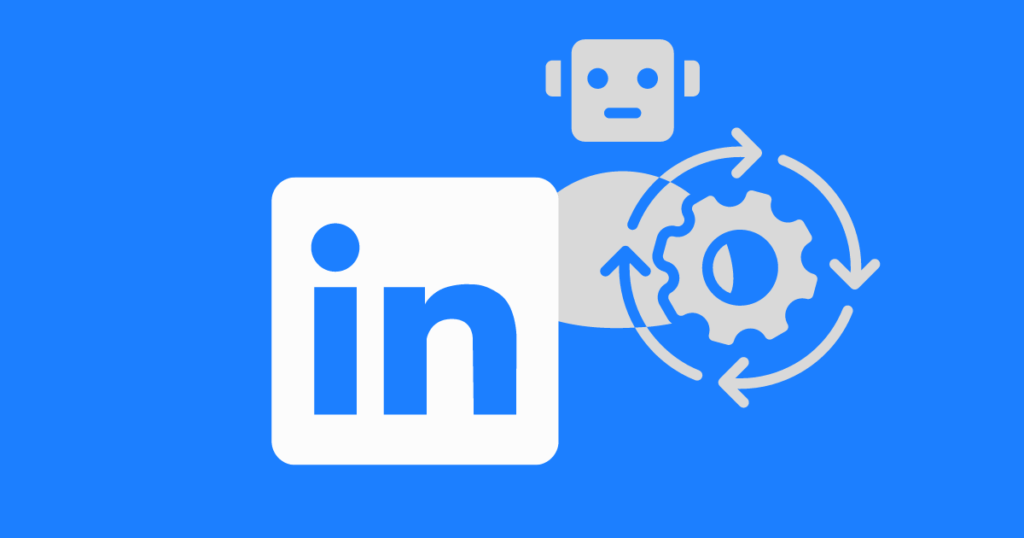As the digital landscape continues to evolve, AI (Artificial Intelligence) and automation are no longer just buzzwords—they are essential tools that have revolutionized LinkedIn marketing. While many marketers have embraced these technologies, few fully understand their depth and the advanced techniques that can make them even more effective. In this article, we’ll dive into AI & automation strategies for LinkedIn that only an expert in the field can leverage for competitive advantage.

Follow me on Linkedin for more.
1. The Role of AI in LinkedIn’s Content Algorithms
LinkedIn’s algorithm is increasingly driven by AI, which prioritizes content based on factors such as engagement probability, relevance, and user preferences. Here’s what an expert should know:
- Relevance Weighting: LinkedIn’s AI uses machine learning to understand a user’s content preferences. It analyzes historical data (likes, shares, comments) to predict which content is most relevant to individual users. If you’re leveraging automation tools for posting, it’s important to align your content with trends in engagement to ensure it ranks highly in LinkedIn’s feed.
- Engagement Amplification: AI-powered algorithms can favor content that garners quick engagement (within the first 1-2 hours of posting). By using AI-based content scheduling tools, you can post at optimal times when your audience is most active, thus increasing the likelihood of immediate engagement.
- Natural Language Processing (NLP): LinkedIn’s algorithm uses NLP to detect the tone, context, and sentiment of posts. Posts that appear informative, supportive, or conversational tend to perform better. Advanced content automation tools equipped with NLP capabilities can generate posts that resonate emotionally with LinkedIn’s professional audience.
2. Advanced Automation Tools and Their Impact
Automation tools for LinkedIn go beyond scheduling posts. They include AI-driven analytics, lead generation, and content optimization tools. Here’s a breakdown of advanced tools and strategies that experts use:
- AI-Based Content Creation: Tools like Jasper AI and Frase leverage AI to craft compelling LinkedIn posts tailored to specific industries and audiences. These tools use advanced algorithms to analyze top-performing posts in your niche and generate content that matches the style and language your audience prefers.
- LinkedIn Lead Gen Automation: Dripify and Expandi are examples of AI-driven automation platforms that allow marketers to automatically send connection requests, follow-ups, and direct messages in a highly personalized manner. Advanced users will layer in A/B testing to refine these outreach strategies further, ensuring the messaging resonates with different audience segments.
- Smart Auto-Responders: Chatbots are gaining ground on LinkedIn for real-time interaction. AI-based tools such as Conversica provide automated yet personalized responses to inquiries on LinkedIn. These bots use AI to understand context and intent, offering more intelligent responses than traditional keyword-based systems.
3. Personalization at Scale: AI-Driven Targeting
One of the main challenges in LinkedIn marketing is delivering personalized experiences at scale. AI bridges this gap by enabling hyper-personalization strategies. Here’s how experts harness AI to elevate personalization:
- Dynamic Content Personalization: AI analyzes vast data sets including user behavior, job titles, company size, and industry trends. Using tools like HubSpot or Salesforce, you can automate the personalization of outreach messages based on LinkedIn data. For example, your automation tool can recognize a user’s role (e.g., CMO) and adjust the messaging accordingly, focusing on high-level strategic insights.
- Predictive Analytics for Content Strategy: AI-powered predictive analytics tools like Crimson Hexagon and Hootsuite Insights can forecast which topics will resonate with your audience. Experts use this data to create content calendars that predict engagement trends for weeks or even months in advance, ensuring content relevance.
4. AI in Ad Campaign Optimization
AI is also transforming how LinkedIn Ads are run. Experts use AI-driven tools for continuous optimization, ensuring maximum ROI from their advertising efforts:
- Real-Time Bidding Algorithms: LinkedIn’s ad platform uses machine learning to optimize bids in real-time. By employing AI-driven bidding strategies, advanced users can adjust their budgets dynamically based on performance, ensuring they bid more aggressively on high-potential leads and less on low-potential ones.
- Ad Copy Generation with AI: Tools like Writesonic and Copy.ai use AI to generate ad copy that’s not only keyword-optimized but also designed to resonate with a professional audience. Experts often run A/B tests using these AI-generated variations, refining ad performance with minimal manual input.
- Audience Segmentation Using AI: LinkedIn’s AI segmentation features allow marketers to create hyper-targeted campaigns based on user behavior, demographics, and engagement history. AI tools such as AdRoll or RollWorks can further refine these segments, providing a detailed breakdown of user personas, which helps in creating highly tailored campaigns.
5. AI-Powered Analytics and Performance Tracking
Data-driven insights are critical for adjusting LinkedIn strategies in real-time. AI tools now offer more nuanced and actionable analytics:
- Advanced Sentiment Analysis: AI tools like Brandwatch and Socialbakers analyze the sentiment behind engagement (positive, neutral, or negative). This data can inform content strategy, helping marketers pivot when audience sentiment shifts. For instance, if users start responding negatively to a particular topic, the AI system will flag it, allowing you to adjust your strategy immediately.
- Predictive Engagement Tools: Tools such as LinkedIn’s Insights or Sprout Social use AI to predict how well a post will perform based on previous content data. Experts use this to fine-tune both organic and paid strategies, ensuring they invest in content with the highest probability of success.
6. Future Trends: AI Advancements in LinkedIn Marketing
Looking forward, AI’s role in LinkedIn marketing will only grow, with innovations in AI-driven content curation, predictive lead scoring, and augmented reality (AR) for LinkedIn Ads. Experts are already experimenting with:
- Predictive Content Trends: AI is being used to predict the next big topic or trend based on global data points. By analyzing millions of data sources, AI can help marketers stay ahead of trends and create content that will resonate in the coming months.
- Enhanced AR/VR Ads: The future of LinkedIn ads may include AR/VR content. AI could help marketers deliver immersive, interactive experiences, such as virtual product demos directly within LinkedIn ads.
Conclusion
Incorporating AI and automation into your LinkedIn marketing strategy is more than a tactical advantage—it’s a necessity in today’s data-driven world. By leveraging these advanced tools, experts can automate routine tasks, hyper-personalize content, optimize ad performance, and analyze user sentiment at an unprecedented scale. As AI continues to evolve, those who stay at the forefront of these innovations will dominate LinkedIn marketing in 2024 and beyond.
